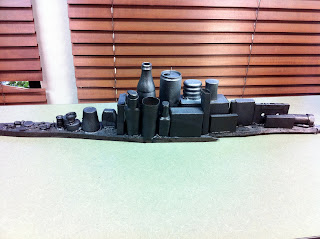Here are some of the questions I wrestled with:
- How does aesthetic education improve people's lives?
- My knee jerk reaction was to think that this question didn't even need to be asked. Obviously, the study of the history of visual art is important...why else would we have museums and preserved architecture and innumerable books on the topic? But that still doesn't answer the question of how aesthetic education improves lives. So I sat with the question for some time, and here are some of my thoughts:
- By studying art history we better appreciate beauty, and we fill some of the fleeting moments of our life with loveliness that is a reward on a psychological and emotional level.
- Through examining the art of the past we are finding ways to compare the art of today to the art of ages long gone, giving us a chance to refine our understanding of beauty in the context of what has come before.
- When we engage with something we find beautiful, we have a moment that transcends time....we have a kinship, a shared experience in some way with the artist who has the ability to touch something in us. We are given the opportunity to commune with the past, people and civilizations that, in some situations are long gone and far removed.
- By studying the art of the past, we have the opportunity to celebrate human achievement.
- We can be inspired - not just to create art, but to share it, talk about it, think about it, let it move us....to keep it alive.
- Is it possible to teach art history from a fair and unbiased perspective?
- No. How can we? We are human, and we have opinions, especially about the creative arts. Textbooks try their best to remain neutral, but merely through the selection of artworks there is a bias. There is no way to not present art in terms of some being of elevated quality unless the study of art is entirely random, which would lead to an interesting, unconventional, and ultimately implausible course approach....agree? disagree?
- So, since we cannot be unbiased, should we try? Would it be better to share our appreciation, and sometimes distaste, in a passionate and genuine way to inspire out students to also develop opinions of the art we study? I must admit, I've always bristled at the idea that I should not express my opinions, and have at times shared that some artists and works are my favorites.
- How should we select artworks for class study?
- In most art survey textbooks we are presented with a sampling of the iconic, cream of the crop works. Is it our job to ensure that students learn factoids they can spout off related to these iconic works, or can we assume they could easily stumble across them on their own? Would it be better to introduce them to little known gems that diverge from the canon of art historical survey slides?






















